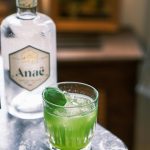Your cart is currently empty!

Steven Coulson
Steven has been drinking beers, wines and spirits for decades and has a propensity to go about them at length after a few drinks.
Latest Posts
- My wife found out our favorite Gin for martinis was discontinued. I think we are good for a while…

- Oregon Road Trip: Freeland Spirits Garden Botanicals Gin

- Botanist with Trader Joe’s Lemon and Elderflower Soda

- I’m one of the worlds leading buyers of craft gin in the world and a international spirit judge AMA

- I’m blown away…. By how let down I am by this Gin.

Categories
Tags
Social Links

The End of the “Natural Wine” Trend: A Call for Authenticity in the Wine Industry
In recent years, the surge in popularity of “natural wine” has sparked considerable debate within the wine community, leaving many of us with mixed feelings about the trend. As an experienced sales representative for a distributor specializing in smaller, family-owned wineries that prioritize organic, sustainable, and biodynamic practices, I find myself longing for a return to authenticity in the world of wine.
While the ideals behind natural wine—promoting true expressions of grape and terroir—are commendable, the current interpretation has strayed far from its original essence. I frequently visit bottle shops that exclusively showcase natural wines, and it often feels as if the focus has shifted from quality to aesthetic. Too many products on the shelves appear to be nothing more than whimsical labels and overly simplistic juice drinks that bear little resemblance to what wine should be.
The reality is that anyone can produce a natural wine, slap on a trendy label, and set a price tag of $30 per bottle. Many of these options are nothing more than overly acidic, sediment-filled concoctions that lack the nuanced character we admire in traditional wines.
Yes, I appreciate the occasional pet-nat or a funky, barnyard-style vintage; they have their time and place. However, it’s become increasingly frustrating to wander through shops where every bottle seems designed to resemble the label of an IPA rather than convey a sense of place or tradition.
While I applaud the shift towards cleaner practices that prioritize fewer additives and a reduced carbon footprint, I yearn for the moment when wine shops and bars remember that true natural wines have been created for many years before this trend emerged—and these wines can also embody a more refined and polished character. Moreover, it’s essential to recognize that sulfur dioxide (SO2) is not the villain many believe it to be; in fact, it’s prevalent in many foods we enjoy, such as dried fruits and frozen berries.
As we navigate this evolving landscape, let’s advocate for wines that genuinely represent their terroir, embracing a broader definition of what it means to be “natural.” Here’s to hoping the natural wine fad soon gives way to a deeper appreciation for the craftsmanship of winemaking that honors tradition while still pushing the envelope.
Join the conversation: What are your thoughts on the natural wine movement? Are you seeing the same developments in your local wine scene?
